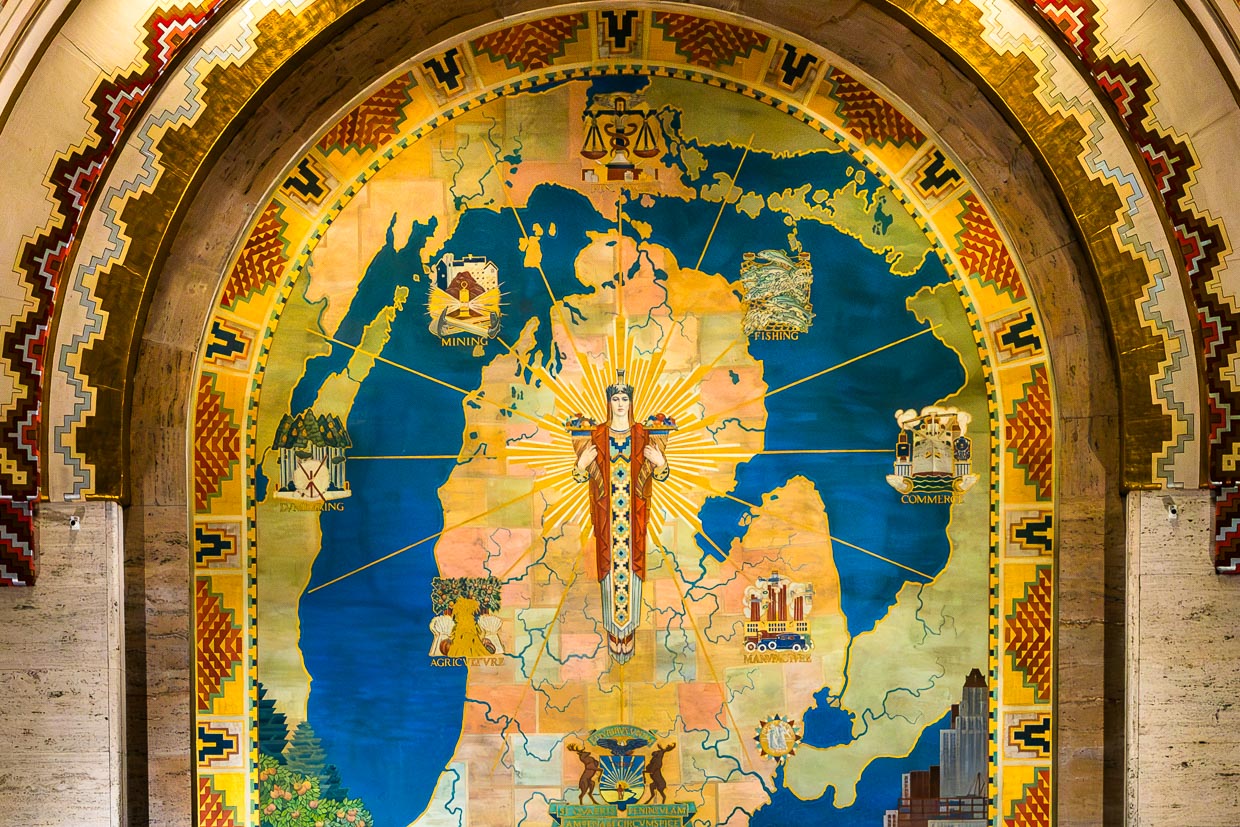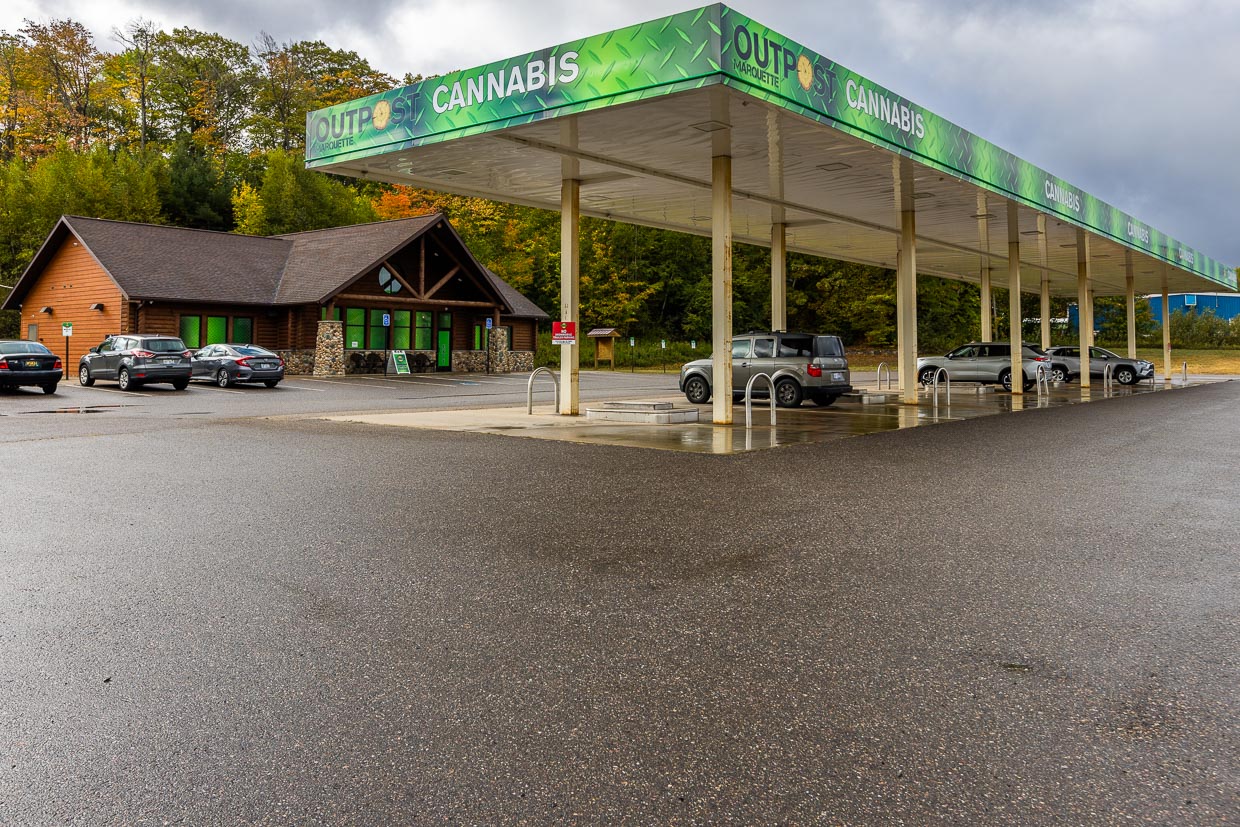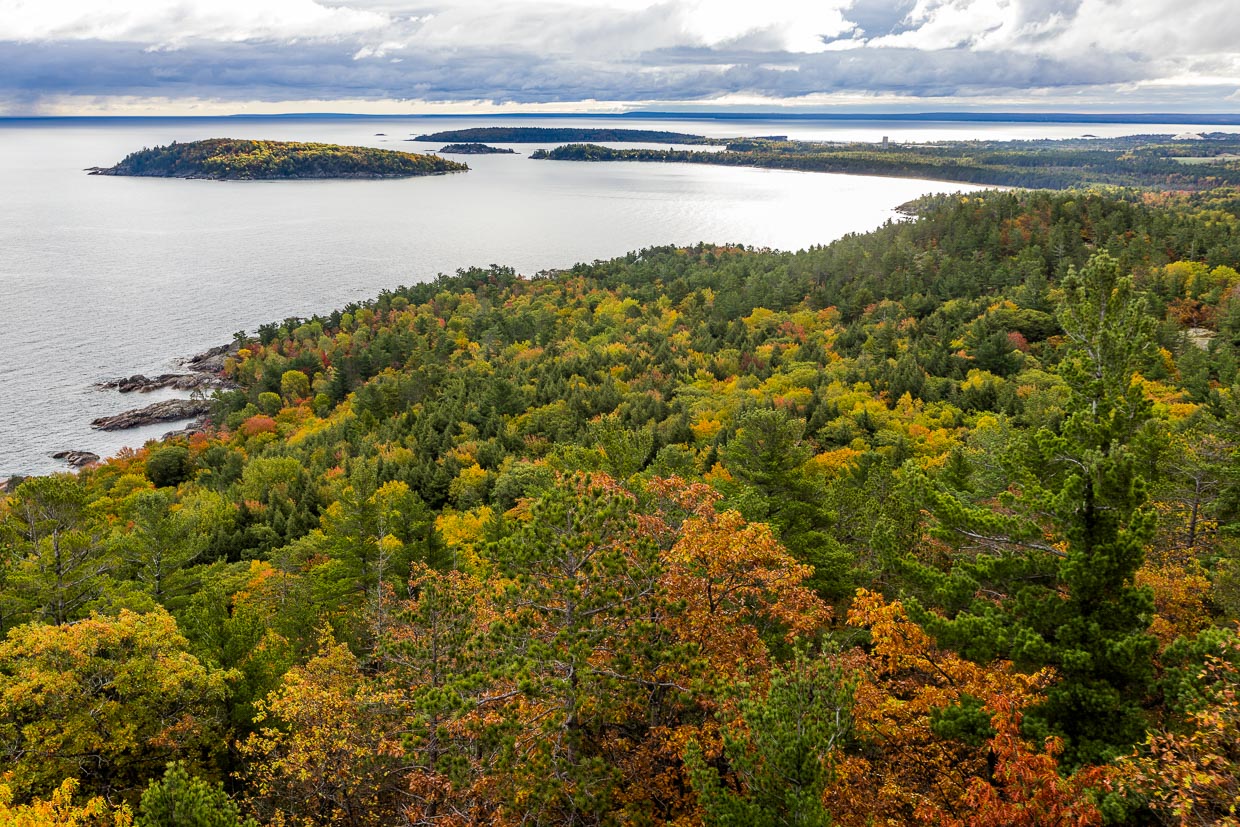In Detroit, we gaze in awe at a huge mural in the banking hall of the Guardian Building. It stretches over six floors and shows the map of Michigan, a state consisting of two peninsulas. MANUFACTURE is written in large letters on the large lower peninsula and MINING on the upper peninsula. These two components were once the driving forces behind heavy industry.

However, the success story began with a defeat. When Michigan was to be granted the status of a US state in 1835, there were disagreements with the state of Ohio over the southern border at the city of Toledo. Both territories mobilized armies, but it did not come to the feared War of Toledo. The US Congress ruled in favor of Ohio and gave the new state of Michigan the Upper Peninsula, which was considered worthless at the time, as compensation. However, enormous mineral resources were later discovered there, making Michigan an industrial state and Detroit the capital of US car production. After Detroit’s spectacular bankruptcy in 2013, the structural change attracted many creative people and today the city is once again up-and-coming and attractive.
Marquette became the center of iron mining

Marquette, named after the Jesuit priest Jaques Marquette, is a quiet little town today. An impressive building at the marina amazes us, but its function is not immediately obvious. We had never seen anything so massive before. An explanatory panel begins philosophically: “Patience is a virtue that is often preached to us. But impatience breeds innovation, and that’s how the first pocket dock for iron ore was created.” Then the plaque gets specific: “In 1857, Captain George Judson had had enough. It took six days and 20 men to load his ship with shovels and wheelbarrows. During this time, other ships were jammed in front of the harbor. Over time, larger and larger facilities were built and the dock, which is still visible today, reduced the loading time to 92 minutes per ship.

Outside of town, we can see a similar structure that shows that Marquette, with its deep-water port, is still an important transshipment point for the iron ore mined just a few miles inland.

Iron mining in Ishpeming
In 1844, an exploration team in the Marquette backcountry noticed large swings on their compass needle and discovered a large iron ore deposit that brought jobs and prosperity to the Upper Peninsula over the next century. Today, the boom has subsided and you can walk along disused tracks and see many silent witnesses to 160 years of mining on the 75-kilometer iron ore nature trail.


Industrial architecture in Egyptian style
The museum presents the mining history of the region. Objects that were used to dig the ore are displayed in front of the museum. The museum director hopes that at some point there will be enough funds to make the inside of the concrete obelisks accessible to visitors. For once, she opens the rusty iron door for us so that we can enter. At the site where more than 28 million tons of iron ore were mined, all we can hear today is the flapping of the wings of the pigeons that nest here.


Cinema, pubs, cannabis
Mining made the region prosperous and traces of the leisure activities of the time can still be seen today. The booming region attracted miners from many parts of Europe. The Vista Cinema was founded in 1926 by a Finn and had the reputation of being the best theater north of Milwaukee and east of Minneapolis. Thanks to a citizens’ initiative, it is still in operation. The pub culture in this area is also not to be underestimated and Michigan beer enjoys an excellent reputation in the United States.


If you also want to immerse yourself in history when it comes to beer, you can have a good time in an old brewery. In 1883, the German Martin Vierling founded a pub in the middle of Marquette, which included a gentlemen’s saloon and a sample room where women could also enjoy a meal. Prohibition in 1917 led to several changes of ownership and use, but today the Historic Vierling Saloon & Sample Room exists again, furnished with original stained glass and oil paintings from Martin Vierling’s own collection.

The Grass is Greener over Here
An unusual sight for Europeans can be found along many highways in Michigan. Former petrol stations have been discreetly converted into cannabis shopping centers and the goods are sold over the counter. This would not be allowed in the neighboring state of Wisconsin.

Indian summer is no longer correct

Finally, we need to clear up a misconception. When the leaves turn colorful in the fall, especially in North America, we have learned that everyone is happy about Indian Summer. But in a changing world, we learn more about each other. On our trip, we realized that we use many expressions without questioning their meaning or origin. The term Indian summer is controversial as its origin is unclear and possibly derogatory. Many feel it is disrespectful to Native Americans and therefore prefer alternative terms such as Second Summer or more neutrally Fall Foliage.
Our journey through Michigan starts in the capital Detroit with classics and new attractions of a city in transition. The huge Michigan Central station, once a ruined line, celebrated its comeback as a research location for mobility in 2023. However, the options for getting around Detroit have long been extremely diverse, as mobility in Motown works pretty well even without a car. The journey continues to Traverse City on Lake Michigan with the Sleeping Bear Dunes National Park. Mission Point Lighthouse is one of these lighthouses with a history. Why the lighthouse in Grand Traverse County is particularly popular with women is explained in the story about Sarah Lane and the keeper program. We continue on to Charlevoix. The town has a maritime flair and lots of stones. There are Petoskey stones on the beach and Earl Young’s famous stone houses in the town. USA without cars? A fact on Mackinac Island. The success story of Michigan’s heavy industry began with a defeat.
The research was supported by Pure Michigan

